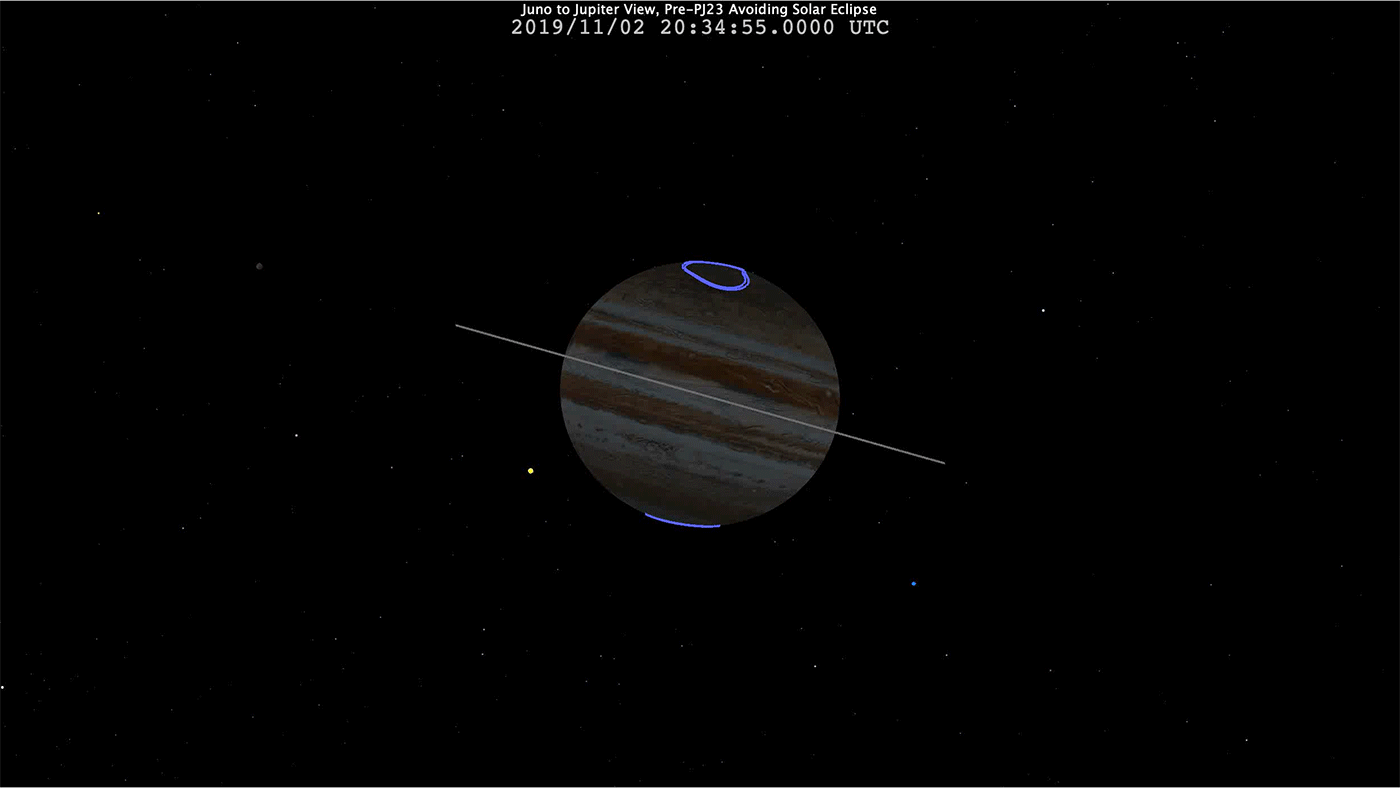NASA's Juno deep-space probe has completed a major orbital maneuver to keep it out of Jupiter's deadly shadow. The 10.5-hour burn began on September 30, 2019, at 7:46 pm EDT and was executed to keep the solar-powered unmanned spacecraft from being eclipsed by the giant planet on November 3, which would have caused the orbiter to permanently shut down.
One of the novel features of Juno is that, unlike previous missions to the outer solar system, the spacecraft is solar-powered, generating electricity thanks to large, advanced photovoltaic panels. It's a testament to how far solar technology has come, but it also means that Juno is dependent on the Sun to keep on functioning.
Originally, this wasn't a problem for NASA because of the planned highly elliptical orbit that would always keep it out of Jupiter's shadow. Unfortunately, when Juno went into its initial 53-day orbit around Jupiter on July 4, 2016, there was a malfunction with the main engine and mission control decided not to risk the additional main burns that would place the craft into the planned 14-day final orbit.

As a result, the Juno mission took longer to complete and it meant that sooner or later the craft would pass into the shadow of Jupiter – an event that would last 12 hours. During this time, the spacecraft's batteries would have drained and its electronics would have frozen to the point where it would have been impossible to reawaken the probe.
To prevent this, NASA ordered Juno to fire its reaction control thrusters, which it normally uses to keep the craft's high gain antenna pointed at the Earth. According to the space agency, the burn was five times longer than any previous one for the propulsion system and altered the probe's velocity by 126 mph (207 km/h) as it burned 160 lb (73 kg) of propellants.
Juno is now on a sunny, safe trajectory for the time being.
"With the success of this burn, we are on track to jump the shadow on November 3," says Scott Bolton, Juno principal investigator at the Southwest Research Institute in San Antonio, Texas. "Jumping over the shadow was an amazingly creative solution to what seemed like a fatal geometry. Eclipses are generally not friends of solar-powered spacecraft. Now instead of worrying about freezing to death, I am looking forward to the next science discovery that Jupiter has in store for Juno."
Source: NASA





